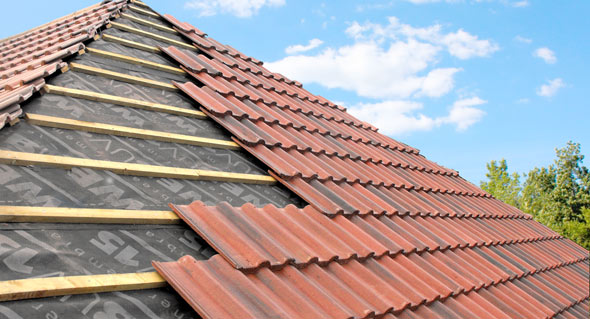Roofing Fire Hazards and How to Reduce the Risks
Jan 27, 2017 07:30
There was a time, just a few short decades ago, that the composition of a home’s roof was largely to blame for a seemingly disproportionate number of house fires. Looking back, it’s not that difficult to understand why; commonly used building materials like wood wool, fiberglass, and bitumen laden shingles combine quite effectively to create a uniquely fire-friendly environment.
These days, building materials and safety regulations have come a long way, but that doesn’t mean that the risk of a home’s roof catching fire is completely eliminated. Your roof is still prone to fire under the right conditions – conditions that can be as innocuous as a simple errant ember from a neighbour’s barbecue, fire pit, or fireworks.

One of the biggest problems with this roofing method is that it’s easy to damage the home during the installation process. There are many accounts of contractors accidentally overheating something in the attic – overheating, of course, leads to smoldering, and smoldering can quickly start a fire in a dry attic. Thankfully, there are many alternatives to this dangerous and somewhat controversial roofing method, many of which place a much greater emphasis on fire prevention.
Wood
Yes, wood – but not just regular wood. If wood shingles are the way you’re headed, make sure you look for those that are treated with modern fire-retardant compounds. While among the cheapest alternatives when it comes to using fire-resistant materials, this material comes with its fair share of upkeep; as the chemicals leach out over the years, this material will need to be retreated to maintain its fire prevention qualities.
These days, building materials and safety regulations have come a long way, but that doesn’t mean that the risk of a home’s roof catching fire is completely eliminated. Your roof is still prone to fire under the right conditions – conditions that can be as innocuous as a simple errant ember from a neighbour’s barbecue, fire pit, or fireworks.

Torch Down Roofing: What Is It And Why Is It So Dangerous?
Torch down roofing is a method that comprises layers of modified bitumen (a by-product that’s manufactured when distilling petroleum) that’s bonded to fiberglass using a flame torch. Generally speaking, this type of roofing is only found on flat or low slope roofs and is still surprisingly popular with many roofing contractors (largely because it’s easy to install and adheres quite well to metal flashings) in spite of its inherent dangers.One of the biggest problems with this roofing method is that it’s easy to damage the home during the installation process. There are many accounts of contractors accidentally overheating something in the attic – overheating, of course, leads to smoldering, and smoldering can quickly start a fire in a dry attic. Thankfully, there are many alternatives to this dangerous and somewhat controversial roofing method, many of which place a much greater emphasis on fire prevention.







































































